History of affirmative action in higher education
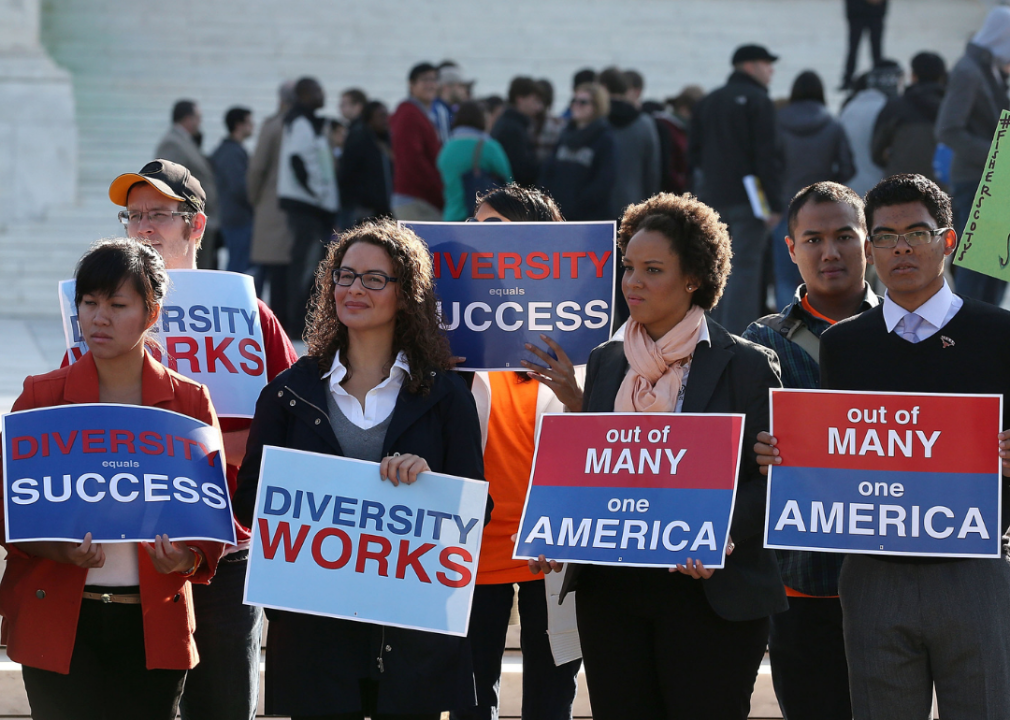
Mark Wilson // Getty Images
History of affirmative action in higher education
Protesters with signs in from of Supreme Court.
On June 29, 2023, the Supreme Court ruled in two cases—regarding Harvard and the University of North Carolina’s admissions practices—that using race as a factor for college admission violates the 14th Amendment Equal Protection Clause. This major decision, with the ruling falling along ideological lines, ends affirmative action in higher education.
Schools across the country still deal with racial segregation today, even though the systematic separation of students by race in American schools legally ended in 1954 with the Brown v. Board of Education ruling. A 2019 EdBuild study of high schools across the country found more than half of students in the United States attend schools in predominantly segregated districts—which are often a result of gerrymandering—with these school systems consisting of 75% white or 75% non-white students. Colleges face similar issues with enrollment diversity. While a 2020 report by nonprofit research organization The Urban Institute found that nonwhite student attendance has increased 191% since 1976, it also reported that currently, about 54% of college students enrolled in four-year institutions are white.
Still, affirmative action in higher education—or a set of procedures designed to eliminate unlawful discrimination among university applicants—has been hotly debated since its inception. From when it became common practice to today, it still faces scrutiny on whether or not it should be instituted.
A 2016 Gallup poll found 70% of adult Americans surveyed believed college applicants should be judged solely on merit, even if doing so means fewer people of color are admitted. A more recent 2021 Gallup poll saw a shift in mindset: Public support for affirmative action is at an all-time high, although Gallup notes support is for the general concept of affirmative action across the country, including the workforce.
The story of affirmative action in higher education covers a complex history of push and pull spanning seven decades, 12 presidential administrations, and countless college students. Best Universities outlined a timeline of affirmative action in higher education, compiling historic court dockets, executive orders, and news reports.
![]()
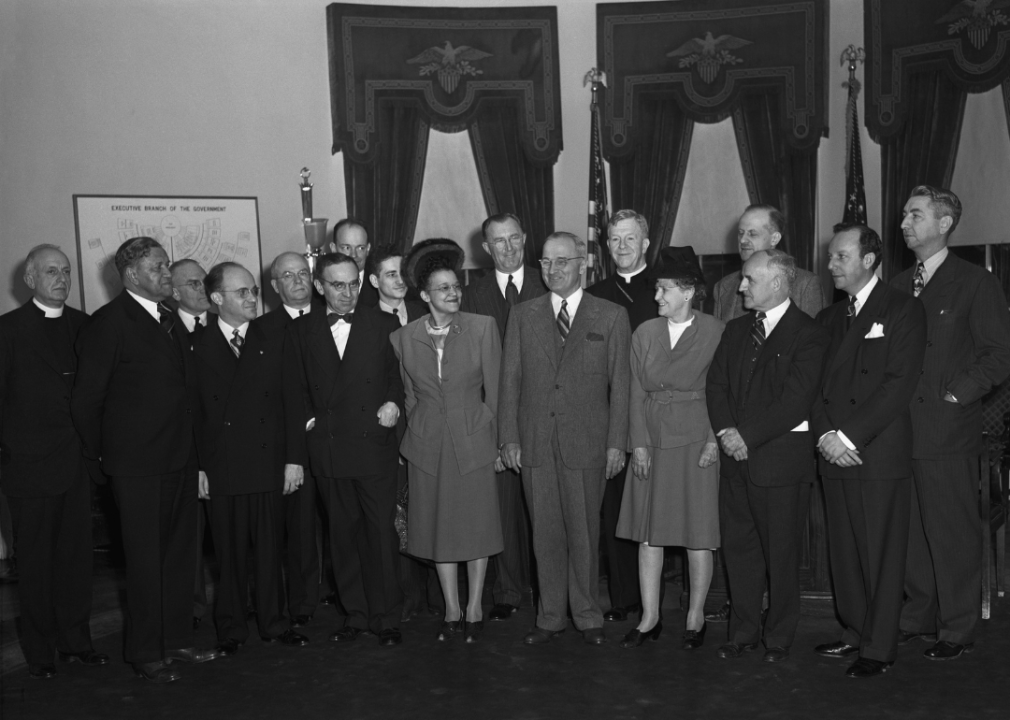
Bettmann // Getty Images
1946: 85% of Black college students attended poorly funded Black schools
President Truman meets with Civil Rights Committee.
In 1946, President Harry S. Truman and his administration commissioned the report “Higher Education For American Democracy.” The report, which was authored by former United States Commissioner of Education George F. Zook, aimed to analyze the state of education in the United States.
Among other discoveries, 85% of the 75,000 Black college students in the report attended poorly funded schools. “The outstanding example of these barriers to equal opportunity, of course, is the disadvantages suffered by our Negro citizens,” the report states. The report drives this point home further as it found 11% of the white population over 20 years of age had completed at least one year of college, where only 3% of non-white students had.
“The low educational attainments of Negro adults reflect the cumulative effects of a long period of unequal opportunity,” Zook said.
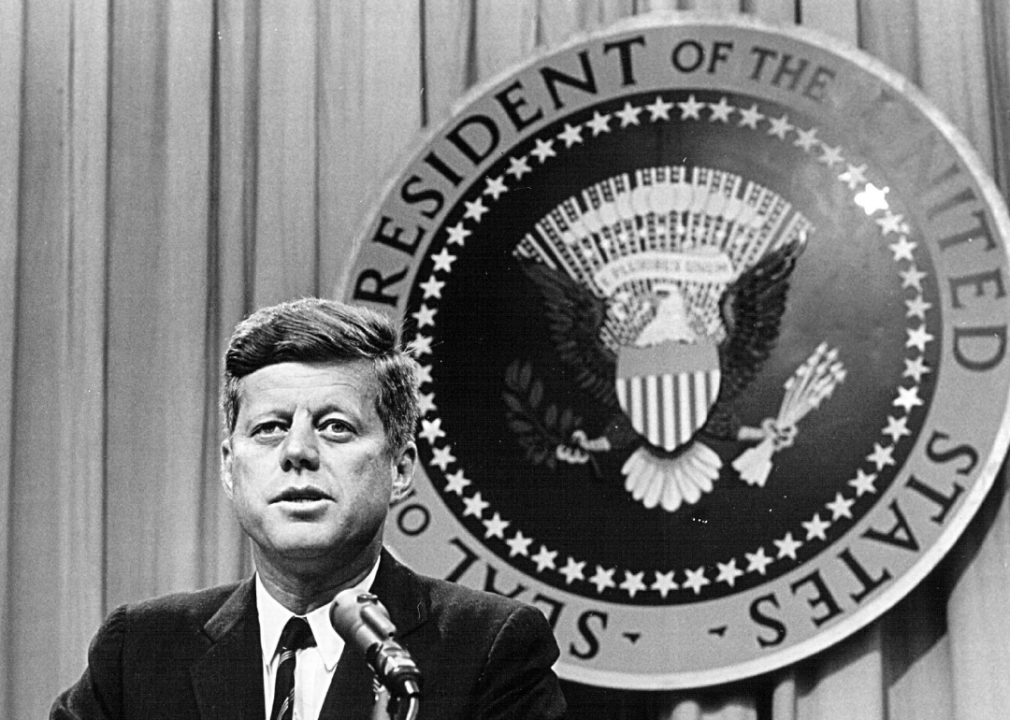
National Archive/Newsmakers // Getty Images
1961: JFK signs an executive using the phrase affirmative action for the first time in its modern context
President John F Kennedy speaks at press conference.
Today, the term affirmative action has come to refer most readily to higher education, but its origin is rooted in employment law. When President John F. Kennedy signed Executive Order 10925 on March 6, 1961, it was the first time the phrase “affirmative action” was used in the fashion it’s used today. To take an “affirmative action” was something literal, “to ensure that applicants are employed, and that employees are treated during employment, without regard to their race, creed, color or national origin.” Legally, employers who allowed the unequal status quo to remain were now required to take an active role in treating all of their employees fairly. This became the basis for affirmative action in higher education.
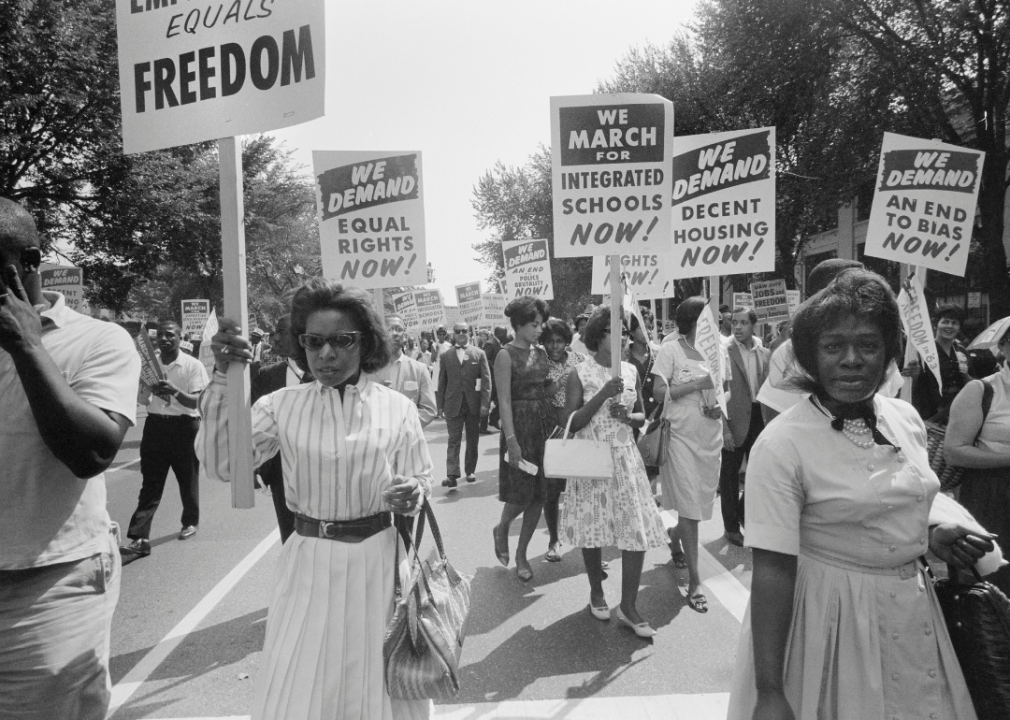
GHI Vintage/Universal History Archive/Universal Images Group via Getty Images
Late 1960s: Civil Rights Movement prompts elite universities to prioritize greater diversity in admissions
Civil Rights March on Washington
The Civil Rights Movement caused the nation to face how Black Americans were treated in day-to-day life, and it also sparked significant change in how laws dealt with discrimination in education. In the late 1960s, elite universities began to prioritize admitting more students of color, with Columbia University admitting about 50 Black students, more than double the previous year’s enrollment. With the rise in these students’ admission came quick and fervent opposition, with lawsuits and protests intensifying after more colleges began emphasizing diversity on their campuses.
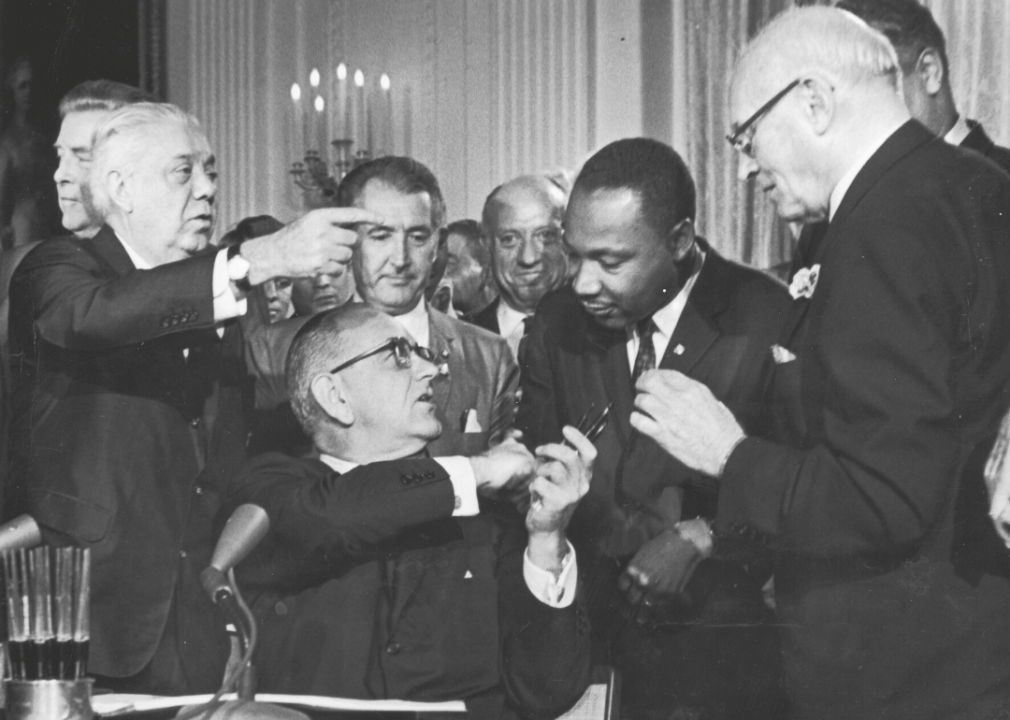
Hulton Archive // Getty Images
1972: Title VII of the Civil Rights Act amended to include educational institutions
President Johnson shakes Martin Luther King Jr hand at Civil Rights Act signing.
Title VII of the Civil Rights Act initially restricted discrimination on the basis of race, religion, nationality, and sex. In 1972 it was amended to include educational institutions. The amendment restricted the use of federal funding for discriminatory programs—for instance, restricting the budget of schools that favored admitting white students—which strengthened the goal of affirmative action in the law.
The United States later passed the Equal Educational Opportunities Act of 1974, which made it illegal to segregate based on race, color, sex, and national origin, strengthening the goals of the Title VII amendment.
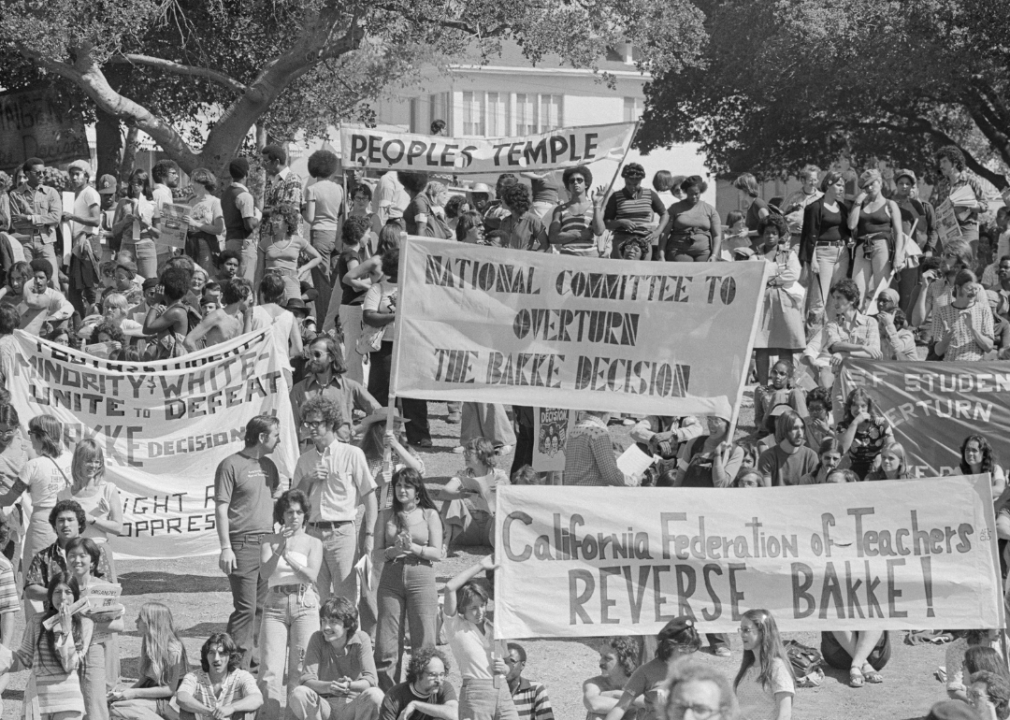
Bettmann // Getty Images
1978: Regents of the University of California v. Bakke
Demonstrators protest Bakke case
Allan Bakke, a 35-year-old white man and hopeful medical school student, applied to the University of California Medical School at Davis twice and was rejected both times. Although Bakke had higher grades than any of the minority students who had been accepted, UC Davis admissions reserved 16 spaces for minority students as part of their affirmative action efforts. In response, Bakke sued in 1978, claiming he was discriminated against on the basis of his race.
After making its way through the California courts, his case reached the Supreme Court. The justices came to the conclusion that while quota systems did in fact violate the constitution, affirmative action itself did not. Bakke was admitted to UC Davis and graduated, later becoming an anesthesiologist.
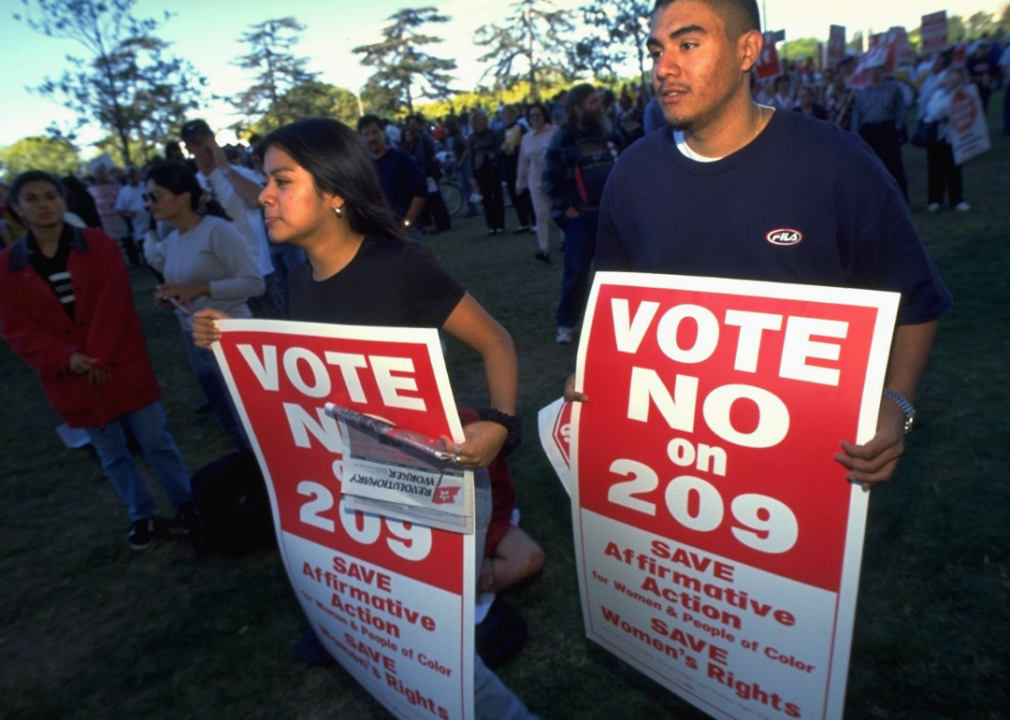
Ted Soqui/Sygma via Getty Images
1996: California and Texas ban affirmative action in college admissions
Demonstration Against Proposition 209
In 1996, two states rejected affirmative action, legally opposing the policy. In California, Proposition 209—a referendum aiming to prohibit state government institutions from considering race, sex, or ethnicity in employment and public education—passed with 55% of the vote. In Texas, four white applicants rejected from The University of Texas School of Law were successful in their lawsuit against the college’s affirmative action admissions policy. This case effectively restricted its implementation for the law school and statewide. Further bans came after these two anti-affirmative-action victories, with Florida and Washington following suit.
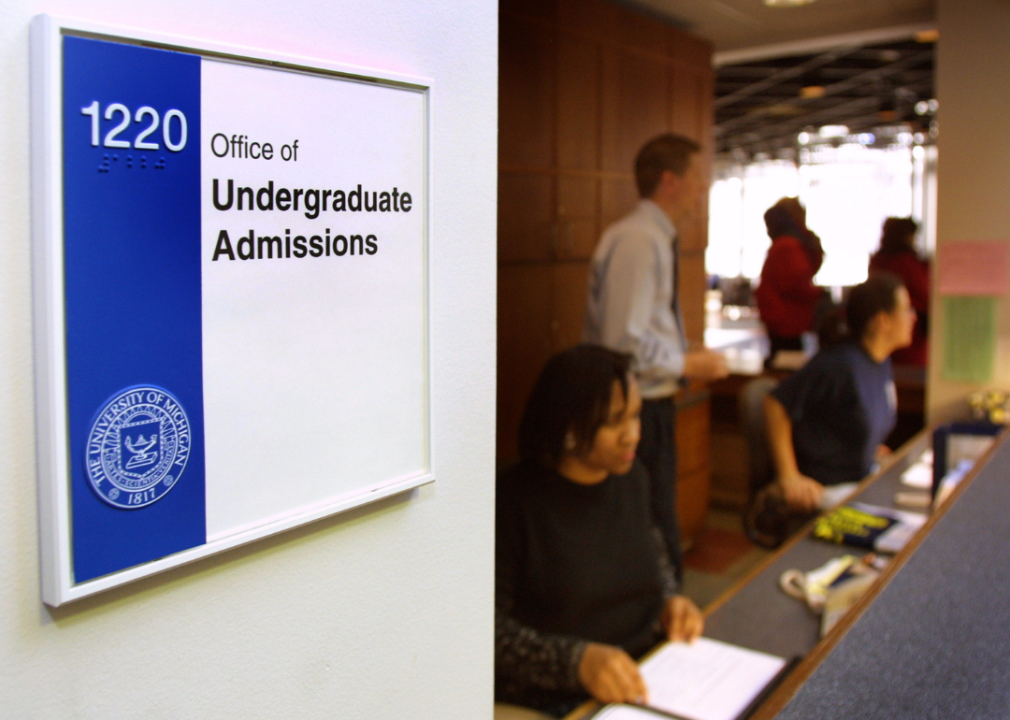
Bill Pugliano // Getty Images
2003: Grutter v. Bollinger
Undergraduate Admission office of University of Michigan
In 1997, white Michigan resident Barbara Grutter was rejected from admission at the University of Michigan Law School. Grutter applied, touting a 3.8 GPA and a 161 LSAT score, 19 points less than the highest score LSAT-takers can achieve. Citing the schools’ admission that they use race in deciding which students are admitted and which are not, the Michigan District Court overturned the use of affirmative action in the law school’s admissions process, effectively ending its practice in the state.
The Court of Appeals referenced Bakke’s case in the Supreme Court, citing the achievement of diversity by using affirmative action is actually legally binding on a federal level. This upheld the use of affirmative action in Michigan.
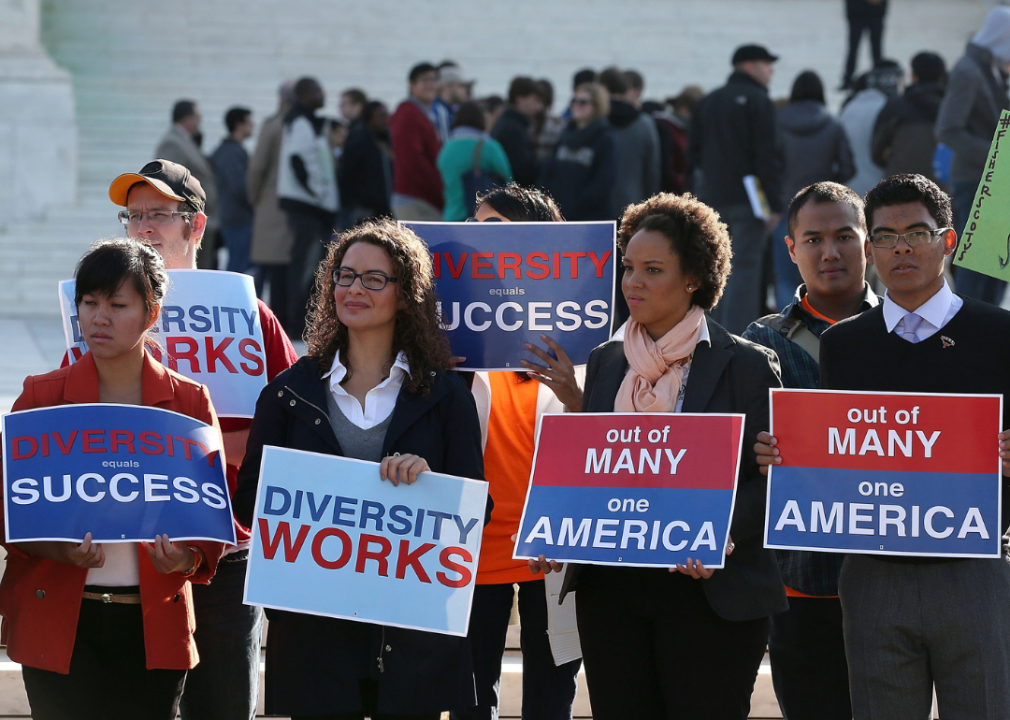
Mark Wilson // Getty Images
2016: Fisher v. University of Texas
Protesters with signs in from of Supreme Court.
In 2008, Abigail Fisher, a white high school student, applied to the University of Texas. By law, UT was required to accept all high school seniors who ranked in the top 10% of their high school classes, a criterion Fisher didn’t meet. Thus, Fisher was considered with the remaining pool of in-state applicants, of which race played a partial role, in addition to academics, personal achievement, leadership activities, family income, and other criteria.
Since Fisher and another white student, Rachel Multer Michalewicz, got rejected from UT as a result of this admissions process, they both filed suit against the university, claiming it discriminated against them by considering race in their undergraduate admissions decisions. They lost the case, and Fisher appealed and lost a second time, but successfully brought the case to the Supreme Court. Ultimately, Supreme Court justices ruled in favor of UT and their admissions policy was upheld.
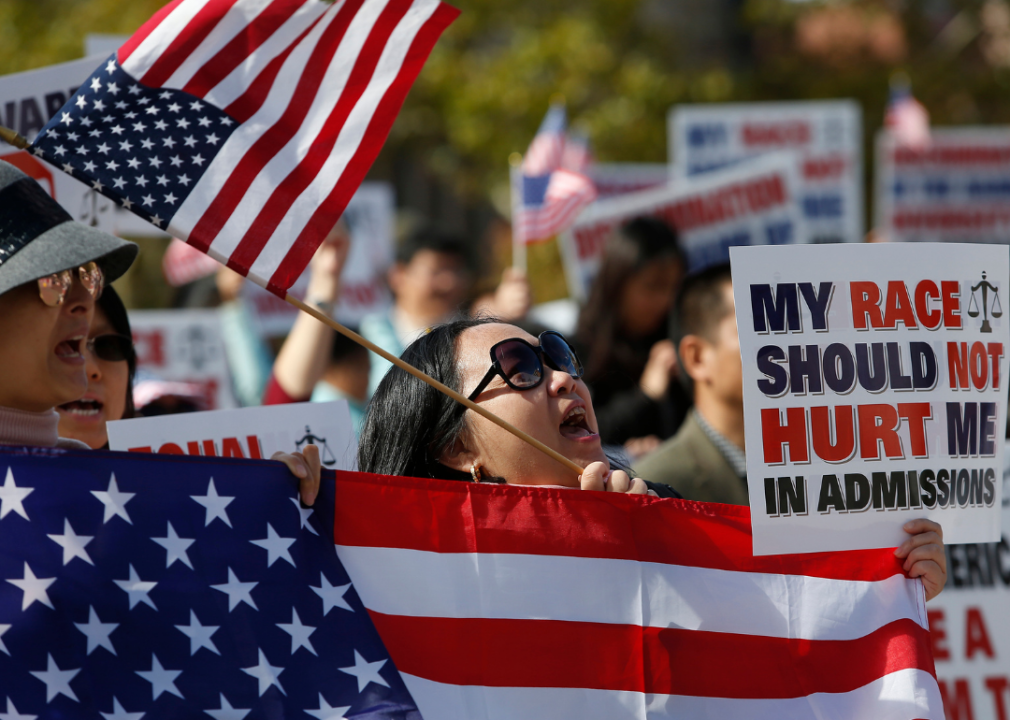
Jessica Rinaldi/The Boston Globe via Getty Images
2022: Supreme Court hears Students for Fair Admissions (SFFA) v. Harvard
Protesters decrying Harvard’s admissions criteria.
Affirmative action is still being challenged legally in headlines as well as the courts today. In 2019, Students for Fair Admissions (or SFFA) alleged Harvard University discriminates against Asian Americans by using a points system that gives greater chances to Black and Latino students in their admissions process. Harvard’s admissions methodology includes considering a combination of factors in addition to academics like geography, and ranking “personal qualities” such as grit, integrity, humor, and kindness.
SFFA claims this ranking system is a thinly disguised—but intentional—attempt at admitting fewer Asian students, a claim Harvard denies. After this case lost in court as well as in the First Court of Appeals, as of 2022, it is now headed to the Supreme Court. The case has been consolidated with a case regarding a similar admissions process at the University of North Carolina.
This story originally appeared on Best Universities and was produced and
distributed in partnership with Stacker Studio.



